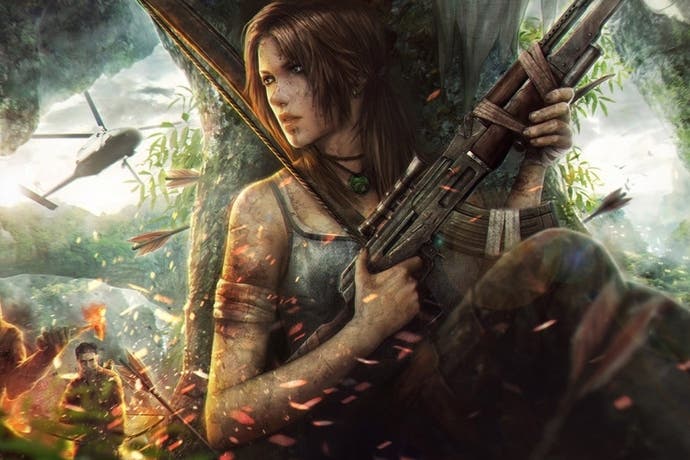Next-Gen Face-Off: Tomb Raider Definitive Edition
The last word.
Earlier this week we kicked off our Tomb Raider coverage with a look at performance on Xbox One and PlayStation 4, uncovering some interesting revelations behind the hotly discussed frame-rate situation - but this is just the beginning of the story. There's so much more to cover: Square Enix promises a dramatic graphical upgrade over the previous console releases with this new Definitive Edition, factoring in brand new effects, a remodelled Lara Croft, lashings of extra detail, and physics-based enhancements that supposedly puts this next-gen version of the game ahead of the spectacular PC release. But just how much of an improvement is it, and are the differences worth splashing out for?
To begin with, let's address the differences between the two versions of the Definitive Edition on offer. PlayStation 4 users get a comfortably delivered 1080p presentation backed up with a post-process FXAA solution that has minimal impact on texture quality, sporting decent coverage across the scene, bar some shimmer around more finely detailed objects. Meanwhile the situation is more interesting on the Xbox One: the anti-aliasing solution remains unchanged, but we see the inclusion of what looks like a variable resolution framebuffer in some scenes, while some cut-scenes are rendered at a locked 900p, explaining the additional blur in some of our Xbox One screenshots. Curiously, the drop in resolution doesn't seem to occur during gameplay - it's only reserved for select cinematics - suggesting that keeping performance consistent during these sequences was a priority for Xbox One developer United Front Games.
For the most part the main graphical bells and whistles are lavished equally across both consoles, although intriguingly there are a few areas that do see Xbox One cutbacks. As demonstrated in our head-to-head video below (and in our vast Tomb Raider comparison gallery), alpha-based effects in certain areas give the appearance of rendering at half resolution - though other examples do look much cleaner. We also see a lower-quality depth of field in cut-scenes, and reduced levels of anisotropic filtering on artwork during gameplay. Curiously, there are also a few lower-resolution textures in places on Xbox One, but this seems to be down to a bug (perhaps on level of detail transitions) as opposed to a conscious downgrade.
Alternative comparisons:
The areas that appear compromised on Xbox One suggest that the transition to developing on the new console isn't going as smoothly as Microsoft would like. Overall though, the visual differences between the two next-gen platforms are fairly minimal and we should stress that the Definitive Edition of Tomb Raider is really quite stunning to behold on both consoles, with the familiar island of Yamatai - and indeed Lara Croft herself - getting a significant graphical upgrade over the 360 and PS3 versions, extending far beyond a simple increase in resolution and frame-rate.
The first things that stand out are the changes made to Lara's head and face, which have been completely remodelled, including reworked animation that displays a wider range of emotions than before. The use of TressFX - in a new 2.0 implementation, no less - sees Lara's hair reacting to the direction of the wind, and the force of impact as she interacts with the environment - a first for consoles. Meanwhile, new material shaders and use of sub-surface scattering dynamically change the look of her skin and clothing in different lighting and weather conditions, with the texture of the skin itself changing as she gets wet, or covered in dirt and blood.
The world itself is also significantly enhanced due to the inclusion of additional foliage and objects spread across the island. Trees and plants feature physics-based properties that react to Lara as she brushes past, and sway according to the direction of the wind. Areas have also been remodelled with added geometry on some objects, while fire effects appear fuller, with more in the way of smoke and particles being rendered. Curiously, there's not really any clear indication of the proposed new lighting model - it appears that the gamma, contrast, and saturation levels have been tinkered with, but we're not seeing a dramatic change in the way that light sources are handled in the new game.
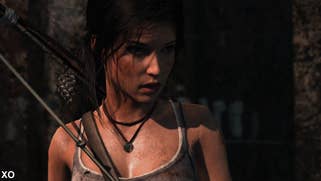
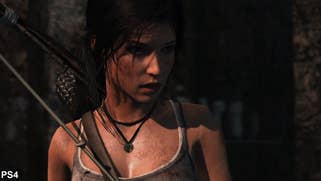
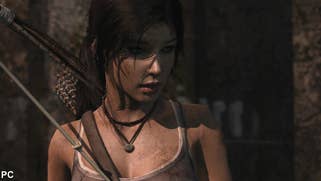




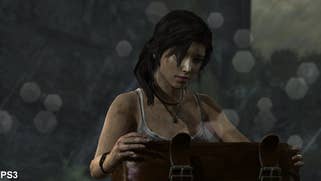
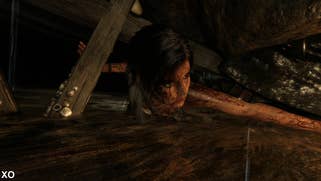


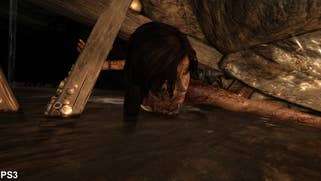

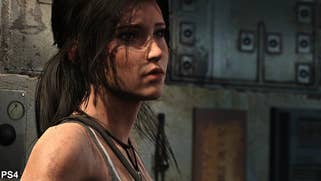
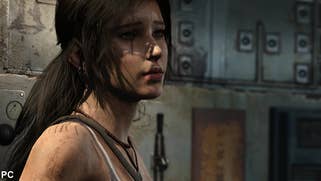
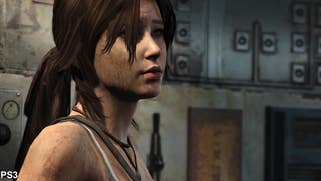

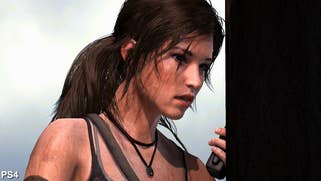


Nevertheless, the range of improvements dotted across the Definitive Edition certainly bring the treacherous island of Yamatai to life to a degree we haven't seen before in the standard game - this is a richer, more immersive environment. The question is, are we looking at genuinely new features here that represent an improvement over the significantly cheaper PC game, or are we faced with a set of compromises stemming from the dramatic makeover that has taken place?
A direct comparison with the PC version set to the ultimate quality preset reveals some large discrepancies between the Definitive Editions compared with the full-fat PC experience. Aspects such as tessellation are missing on the characters and environments, with some of these elements appearing more blocky on the PS4 and Xbox One as a result. Meanwhile, motion blur is used much more sparingly, while texture resolution is noticeably lower in some cases. On the flip side, all the Definitive Edition graphical extras - such as the dynamic foliage and the impressive sub-surface scattering - are absent from the PC, which represents another (albeit smaller) compromise.
The differences here are interesting, because they suggest that the developers of both PS4 and Xbox One versions of Tomb Raider have made some sacrifices to allow for the key range of upgrades on offer in the Definitive Edition. We feel that TressFX may be the main culprit here, given how much impact the older iteration of the tech has on the PC game, where frame-rate can be halved by its inclusion in certain scenarios. Looking at the cut-scene performance analysis on PS4, we can see frame-rates drop significantly when Lara is on-screen, particularly in close-up. Another indication that TressFX sucks up considerable console GPU time concerns the sub-native cut-scene resolution downgrade we occasionally see on Xbox One. Again, we suspect that it's the close-ups on the TressFX-enabled Lara that incur the hit.
"The Definitive Edition includes effects not found on the PC game, but lacks key high-end rendering effects only computer users get to enjoy."
Alternative comparisons:
- Tomb Raider Definitive Edition: Xbox One vs. PC
- Tomb Raider Definitive Edition: PlayStation 3 vs. PC
Even with these compromises, the next-generation versions of Tomb Raider still deliver a massive jump in quality over the 360 and PS3 editions, and in many respects the brand new effects definitely help to further immerse us into the world Crystal Dynamics has created - even if the net result is not a truly definitive visual upgrade in all areas. Despite some odd pouting moments and a frequent haunting look from Lara's new eyes, her face arguably looks more human, and the optimised TressFX 2.0 implementation creates fewer bizarre physics incidents than the PC original.
That said, the extra crispness and clarity available on the PC game due to higher-resolution assets and better filtering are a big draw for the platform - those with top-spec dual GPU configurations can dial up the settings to the 'ultimate' preset and still enjoy extras such as SSAA (super-sampling anti-aliasing) for vastly superior image quality, or even ramp up the resolution to 4K - though beware TressFX bugs if you push resolution that high.
Tomb Raider is also one of the most scalable PC games we've played - producing great results in our GPU tests across the spectrum, and at its very lowest presets, we even managed to play it quite successfully on a Surface Pro.

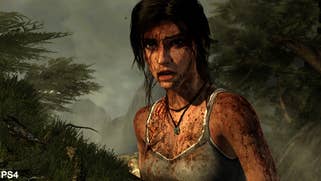



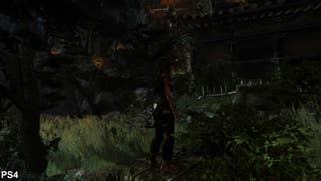
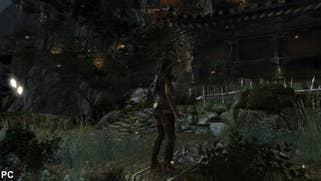


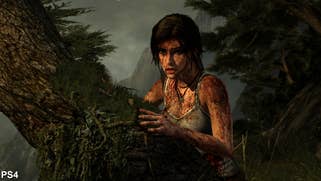
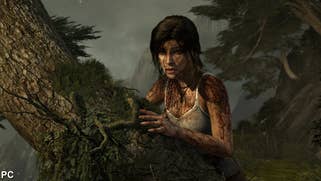


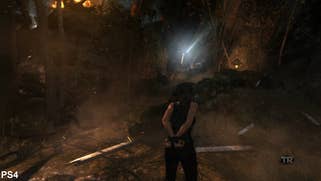
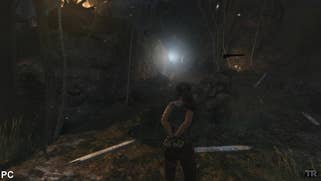

Tomb Raider Definitive Edition: performance analysis
Our early look at performance revealed a startling gap between the next-gen platforms, with PS4 commanding a massive frame-rate advantage, while Xbox One even managed to drop below the 30fps mark under load. For the most part, on the PS4 we see frame-rates regularly fluctuating between 40-50fps depending on the complexity of the scene, with exploration in highly detailed areas with lots of effects responsible for the drop in performance. On the flipside, the game manages to hit 60fps pretty solidly in locations that have fewer effects at work, and in the more scripted action sequences where the rendering load is more predictable.
But despite the inconsistency in the PS4 experience, we still feel it's the preferable buy. During combat - a key element in the game - we see the Xbox One drop down to the mid 20s, with the PS4's higher frame-rate offering a clear advantage in both smoothness and response, despite the fluctuations - the bottom line is that the differences between 40-50fps on the PS4 are far less of an issue than, say, the 24-30fps drops incurred by the Xbox One.
That said, when exploring more complex locations filled with heavier effects work, the more consistent frame-rate provided by Xbox One has some advantages - motion has less judder during fast camera pans and more hectic moments, while the controls feel more stable. This is most obvious when the PS4 hovers between the 40-45fps mark, but once we reach metrics closer to 60fps, the inconsistent frame-rate is no longer a problem, and we get a smooth and fluid gameplay experience that the Xbox One simply cannot match. When PS4 operates at the full 60fps, it's a superb experience - but its performance drops are in no way as damaging to the experience as they are on the Microsoft platform.
"Despite the inconsistency in its update, Tomb Raider on PS4 always hands in frame-rates well north of 30fps - useful during combat, where Xbox One can sometimes struggle."
To give a little more insight into what's going on here, our new frame-time graph shows what is happening in more detail from a rendering perspective. Here we can see just how quickly frames are rendered and what impact this has on the level of smoothness on-screen - those dips and spikes in the graph now allow us to visualise the judder caused by fluctuating frame-rates.
From the outset it is clear that the Xbox One delivers the most consistency across a general run of play, with the game mostly adhering to a solid 30fps as Lara explores her surroundings. However, on the PS4 we see frequent dips and spikes in the render time between frames, translating into on-screen judder and a variance in controller response that does feel a little odd during fast-moving action. However, with Xbox One dipping under 30fps - often in scenes where sustained visual feedback and consistent controls are really a must, the Microsoft platform clearly comes up short in comparison to its unlocked rival.
Tomb Raider Definitive Edition: the Digital Foundry verdict
Last year's reboot of Tomb Raider remains an excellent game well worth playing for those looking for new content on their next-generation consoles, with the Definitive Edition delivering a number of key graphical and performance upgrades that go some way to enhancing the look and feel of the game. You also get all of the DLC and extras from the previous versions included on day one (bar Xbox 360 exclusive multiplayer character "Zac") - another nice bonus. On top of that, the Definitive Edition also takes advantage of each console's unique features in a limited fashion, such as being able to select weapons using Kinect gestures on Xbox One, while on PS4 the light bar on the Dual Shock 4 changes colour when Lara fires her pistol.
Overall, PlayStation 4 takes the lead where the next-gen consoles are concerned, with the higher quality effects work and higher frame-rates providing a preferable experience overall, particularly during heated combat, where the drops in performance are both felt and seen more heavily on the Xbox One. That said, as we pointed out in the performance analysis earlier this week, we would have liked an optional 30fps cap in the display settings to eliminate the judder during the frame-rate fluctuations and keep absolute consistency with controller response throughout.
For those wondering how it fares in comparison to the PC version, the choice isn't quite so clear-cut. The open nature of the platform means that hardware upgrades and customisable graphics settings allow the user to dictate the resolution and frame-rate based around the compromises that are most important to them - so if you want a rock-solid 60fps and you're prepared to trade TressFX to achieve it, that's no problem at all.
Running with the ultimate preset enabled and the original TressFX in action, it's clear that the Definitive Edition delivers an upgrade in select areas, but fails to trump the PC game in all respects. Certainly, when it comes to running at 1080p60 - or with even higher resolutions and frame-rate - no other platform can truly offer a PC-beating experience.
Of course, there is another factor to consider: price. The cost of the Definitive Edition varies considerably, but the outlay for a one-year-old title with a new lick of paint certainly isn't cheap considering that the original game can be picked up for under £10 on both current gen consoles and PC. On the one hand, if you've already played the game (on PC especially), a recommendation for the Definitive Edition is hard to make. But on the flipside, this is a beautiful game - one of the best-looking titles to appear on next-gen - and on the PlayStation 4 in particular, it's a lovely showcase for the capabilities of next-gen hardware.
